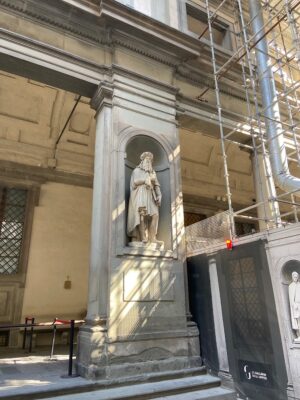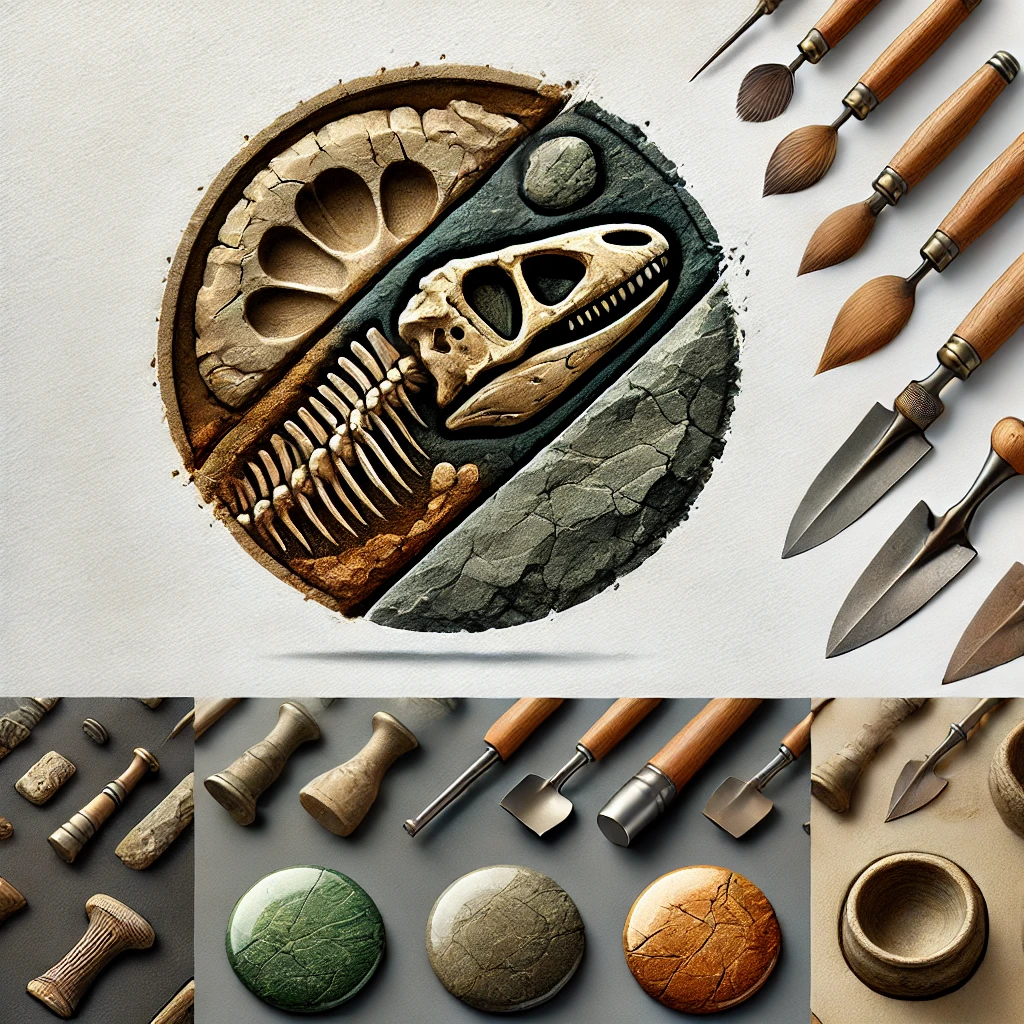Florence, Italy, known as the cradle of the Renaissance, is home to many magnificent works of art, including the renowned sculptures of Leonardo Da Vinci. As a true genius of his time, Da Vinci was not only a painter but also a sculptor, engineer, and inventor. The sculptures attributed to Da Vinci have captivated art lovers and historians for centuries, showcasing his exceptional skills and innovative vision. In this article, we explore the significance of Leonardo Da Vinci’s sculptures, focusing on their impact on Renaissance art, their historical context, and where to find them in Florence. Follow archeology.dulichvn.net to learn more about mysterious artifacts.

The Legacy of Leonardo Da Vinci’s Sculpture
A Renaissance Genius: Beyond Painting
Leonardo Da Vinci is often celebrated for his paintings, such as the “Mona Lisa” and “The Last Supper.” However, his contributions to sculpture are equally important. Da Vinci’s expertise extended beyond the brushstroke, and he engaged in sculptural projects that emphasized the beauty of human anatomy and the natural world. His fascination with movement, form, and proportion allowed him to create sculptures that embodied the ideals of the Renaissance. While many of his sculptures were never completed, his sketches and ideas continue to inspire contemporary artists.
Innovative Techniques in Da Vinci’s Sculptures
Leonardo’s approach to sculpture was revolutionary for his time. He integrated his knowledge of anatomy with artistic technique, aiming to create lifelike, dynamic forms. His ability to study human muscles, bones, and gestures gave him an edge over other artists of the Renaissance, enabling him to design sculptures that were more realistic and expressive. Even though most of his sculptures remain unfinished, his designs demonstrate his innovative thinking and attention to detail.
Leonardo Da Vinci’s Sculptural Influence on Later Artists
Leonardo’s influence on subsequent generations of sculptors is undeniable. Artists such as Michelangelo, Raphael, and others drew inspiration from his methods and attention to detail. The principles of movement, anatomy, and the idealized human form seen in Da Vinci’s work were adopted and refined by other Renaissance artists. Through his exploration of sculpture, Leonardo left a lasting impact on both the artistic techniques and thematic content of Renaissance art.

Da Vinci’s Sculpture Projects in Florence
Leonardo’s Statue of Saint Jerome
One of Leonardo’s most famous sculptural works, though unfinished, was the Statue of Saint Jerome. Commissioned for the church of San Salvi in Florence, this statue was intended to depict Saint Jerome in a powerful and dramatic pose, embodying the saint’s contemplative nature. Though it was never completed, the statue is believed to have influenced later Renaissance sculptures due to its innovative treatment of the human body. Da Vinci’s study of movement and anatomy is evident in the sketches and designs associated with this project.
The Horse Sculpture for Duke Ludovico Sforza
In the late 15th century, Leonardo was commissioned by Duke Ludovico Sforza of Milan to create a monumental equestrian statue of the duke. Although the sculpture was never cast due to various political and financial issues, Leonardo’s design for the statue of the horse demonstrated his expertise in combining art and engineering. The horse was meant to be larger than life, showcasing Da Vinci’s understanding of balance and movement. His plans for this sculpture influenced future generations of sculptors and horse statues.
Da Vinci’s Influence on the Florence Cathedral
Leonardo’s sculptural projects in Florence were not limited to free-standing sculptures; he also worked on the Florence Cathedral (Duomo). His involvement in the architectural designs of the cathedral had a significant impact on Renaissance sculpture, as he brought a deep understanding of human proportions and perspectives to the project. Da Vinci’s sketches and models likely influenced the development of the sculptural decoration for the Duomo’s façade and interior.

Where to See Leonardo Da Vinci’s Sculptures in Florence
The Museo Leonardo Da Vinci
Florence is home to the Museo Leonardo Da Vinci, which showcases a range of Da Vinci’s works, including his sculptural designs. This museum offers an in-depth look at the artist’s anatomical studies, sketches for sculptures, and models of his unfinished projects. Visitors can explore Da Vinci’s creative genius through interactive displays, allowing them to gain a deeper appreciation for his contributions to both art and science.
The Galleria dell’Accademia
While most famous for housing Michelangelo’s “David,” the Galleria dell’Accademia in Florence also displays works by Leonardo Da Vinci. Though the gallery may not feature many of Da Vinci’s completed sculptures, it houses a collection of his studies, including sketches and preparatory work for sculptures. These works highlight the artist’s deep interest in human anatomy, proportion, and movement—essential elements in his sculptural practice.
The Bargello Museum
The Bargello Museum in Florence is another important venue for lovers of Renaissance art. While the museum’s collection is mostly focused on sculptural works by Michelangelo, Donatello, and others, it offers a broader context for understanding Da Vinci’s contributions to the period. Visitors to the museum can observe how Da Vinci’s designs and innovations influenced the art of his contemporaries.

See more: The Historic Significance of Pegasus Bridge on June 9, 1944
The Impact of Da Vinci’s Sculptures on Modern Art
Relevance in Today’s Art Scene
Although many of Leonardo Da Vinci’s sculptures were never fully realized, their impact on the world of art remains profound. Modern artists continue to draw inspiration from his studies of anatomy, movement, and form. Da Vinci’s scientific approach to art—merging art with observation, experimentation, and understanding—laid the groundwork for later developments in sculpture and other visual arts.
Sculpture and Technology: Leonardo’s Legacy
Da Vinci’s fascination with mechanical devices and engineering often intersected with his sculptural endeavors. In the modern era, artists and engineers continue to explore the fusion of art and technology in sculpture. Da Vinci’s ability to combine artistic vision with technical precision serves as a model for contemporary practices, particularly in the realm of digital and 3D sculpture.
Leonardo’s Sculptures in Popular Culture
Da Vinci’s sculptures, and his designs for sculptures, have become iconic symbols of the Renaissance. His works are often referenced in popular culture, from films and literature to educational programs. The ongoing fascination with Da Vinci’s creative genius demonstrates his timeless appeal and the enduring relevance of his sculptures in understanding the evolution of Western art.

Conclusion: Leonardo Da Vinci’s Enduring Sculptural Legacy
Leonardo Da Vinci’s contributions to sculpture are often overshadowed by his paintings, yet they remain an essential part of his artistic legacy. His innovative designs, anatomical studies, and the blending of art with science reshaped the way future generations approached sculpture. Today, visitors to Florence can explore the sites where Da Vinci’s influence still lingers, from his unfinished statues to the enduring impact of his artistic innovations. As we reflect on the genius of Leonardo Da Vinci, we recognize how his sculptures helped shape the Renaissance and continue to inspire contemporary artists across the world.


CÁC TIN KHÁC
Mary Walton: The Forgotten Inventor Who Helped Clean Up America’s Cities
Tomb of Queen Nefertari in the Valley of the Queens, Egypt
Discover the Hypostyle Hall of the Temple of Hathor at Dendera
Venus de Losange: Unveiling the Mystery of a 20,000-Year-Old Paleolithic Icon